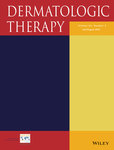Our experience with lipofilling in secondary rhinoplasty, into a new era
Abstract
Rhinoplasty is a commonly performed cosmetic surgery. Clinicians are facing an increased demand on non-surgical procedures, therefore liquid rhinoplasty is gaining popularity. Given the characteristic of lipofilling to rejuvenate and improve skin texture, fat grafting can be used to reshape the nose in secondary rhinoplasty. Fat was injected in 27 patients with a mean age of 42 years. Volume of fat ranged from 1.5 to 4.5 cc with a mean of 2.2 cc. Patients were seen at 1 week, 3 months, 6 months, and 1 year. Patient satisfaction was measured using the Rhinoplasty Outcome Evaluation questionnaire and plastic surgeons' evaluation. After 1 year follow up, 20 patients were satisfied with the results at 1 year. The aesthetic outcome was noted as very good in 11 patients, good in 9 patients, and poor in 3 patients. Most of the patients had an improvement in skin texture with trophic effect on the skin. No complications were seen in our series According to this study, nasal lipofilling is a safe and efficacious filler in secondary rhinoplasty. However, more studies are needed to assess the indications and limitations of nose lipofilling.
CONFLICT OF INTEREST
The authors declare no potential conflict of interest.
Open Research
DATA AVAILABILITY STATEMENT
The data that support the findings of this study are available on request from the corresponding author. The data are not publicly available due to privacy or ethical restrictions.




